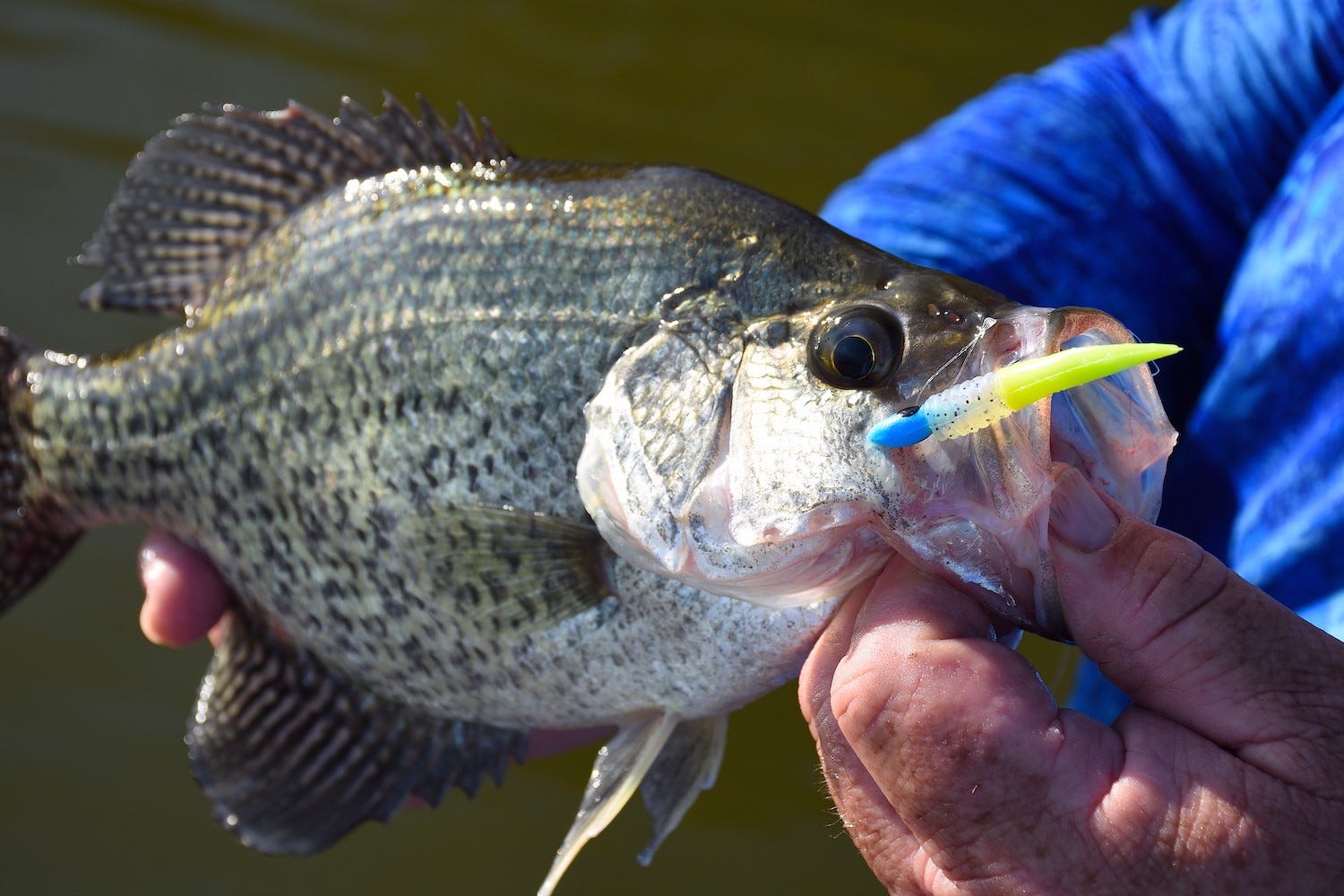- Jun 27, 2022
Weighted Crappie Rigs You Didn’t Know You Could Use for Crappie
Learn about different crappie rigs that allow you to present soft-plastic crappie baits more effectively for a broad range of situations.
In my opinion, the most classic of all crappie rigs – a soft-plastic crappie bait rigged on a small jighead – is the most fish-catching tool on the planet. Think about it. The combo is so little that fish of all sizes, from tiny to giant, can and do eat it. We all have stories about catching – or at least hooking into – monsters of some kind on a crappie bait.
The crappie jig looks like food, most often imitating a prey fish or insect. Today’s technology allows for precision-made, multi-cavity aluminum molds that feature intricate design shapes and features. The result is a realistic forage match that appeals to most gamefish. Sometimes subtlety tempts the most. The perfect example is the teasing action of the flexible, straight tail on a Bobby Garland Baby Shad. Conversely, a bait with a crazy amount of tail action, like the heavy-thumping Bobby Garland Stroll’R, might drive attention.
A crappie jighead is the standard business partner for a host of soft-plastic crappie baits. However, at times, other crappie rigs, including some you might not consider, provide the best means for presenting these baits. Let’s look at ways that non-traditional weighting approaches can boost your crappie catching success.







